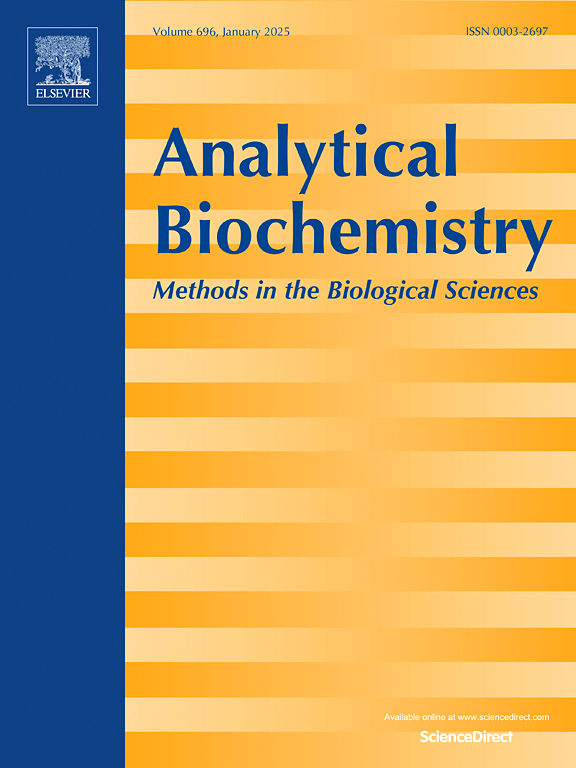利用集成学习推进自噬蛋白鉴定。
IF 2.5
4区 生物学
Q2 BIOCHEMICAL RESEARCH METHODS
引用次数: 0
摘要
自噬是一个重要的细胞过程,它可能对各种生理活动以及维持细胞的生物能量和代谢稳态至关重要。确定参与自噬的蛋白质对于理解自噬途径和开发自噬相关疾病的治疗方法至关重要。这项工作引入了一种预测自噬蛋白的创新方法,该方法涉及将堆叠分类器与两亲性伪氨基酸组成和氨基酸组成的特征融合。最初,蛋白质序列用于提取两亲性伪氨基酸组成和氨基酸组成特征。然后使用特征融合技术对两亲性伪氨基酸组成和氨基酸组成收集的互补数据进行整合。叠加分类器结合多个基分类器,使用融合的特征作为输入来提高预测性能。该方法鉴定自噬蛋白的准确性达到0.9606,独立检测的Matthews相关系数(MCC)达到0.9241,证明了该方法的有效性。此外,通过对比分析,我们的方法在预测准确性方面优于标准方法。总的来说,本研究为自噬蛋白的预测提供了一个现实的模型,在蛋白质预测领域以及生物信息学和生物医学领域都有应用前景,以加强未来的研究方向。本文章由计算机程序翻译,如有差异,请以英文原文为准。

StackAPP: Advancing autophagy protein identification with ensemble learning
Autophagy is an important cell process that may be critical for various physiological activities as well as maintenance of the cellular bioenergetic and metabolic homeostasis. Identifying the proteins involved in autophagy is essential for understanding autophagy pathways and developing treatments for autophagy-related disorders. This work introduces an innovative approach to the prediction of autophagy proteins that involves the integration of stacking classifiers with the feature fusion of Amphiphilic Pseudo Amino Acid Composition and Amino Acid Composition. Initially, protein sequences are used to extract Amphiphilic Pseudo Amino Acid Composition and Amino Acid Composition features. The complementary data collected by Amphiphilic Pseudo Amino Acid Composition and Amino Acid Composition are then integrated using a feature fusion technique. Stacking classifiers combines multiple base classifiers to improve predictive performance, using the fused features as input. The proposed method proves its efficacy in the identification of autophagy proteins by achieving an impressive accuracy of 0.9606 and the Matthews correlation coefficient (MCC) of 0.9241 on the independent test. Further, our methodology is better than the standard methods in terms of predictive accuracy, as evidenced through comparative analysis. Overall, the current study provides a realistic model for the prediction of autophagy proteins with prospects for use in the protein prediction field as well as the field of bioinformatics and biomedical to enhance future research directions.
求助全文
通过发布文献求助,成功后即可免费获取论文全文。
去求助
来源期刊

Analytical biochemistry
生物-分析化学
CiteScore
5.70
自引率
0.00%
发文量
283
审稿时长
44 days
期刊介绍:
The journal''s title Analytical Biochemistry: Methods in the Biological Sciences declares its broad scope: methods for the basic biological sciences that include biochemistry, molecular genetics, cell biology, proteomics, immunology, bioinformatics and wherever the frontiers of research take the field.
The emphasis is on methods from the strictly analytical to the more preparative that would include novel approaches to protein purification as well as improvements in cell and organ culture. The actual techniques are equally inclusive ranging from aptamers to zymology.
The journal has been particularly active in:
-Analytical techniques for biological molecules-
Aptamer selection and utilization-
Biosensors-
Chromatography-
Cloning, sequencing and mutagenesis-
Electrochemical methods-
Electrophoresis-
Enzyme characterization methods-
Immunological approaches-
Mass spectrometry of proteins and nucleic acids-
Metabolomics-
Nano level techniques-
Optical spectroscopy in all its forms.
The journal is reluctant to include most drug and strictly clinical studies as there are more suitable publication platforms for these types of papers.
 求助内容:
求助内容: 应助结果提醒方式:
应助结果提醒方式:


